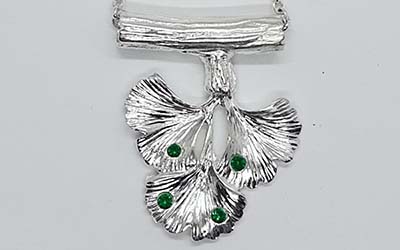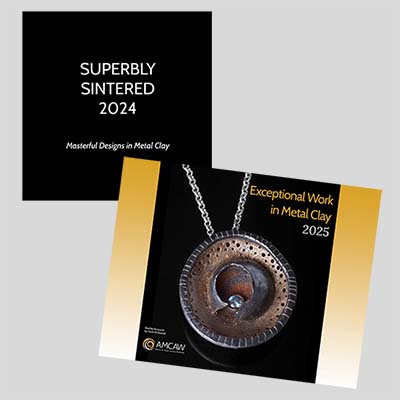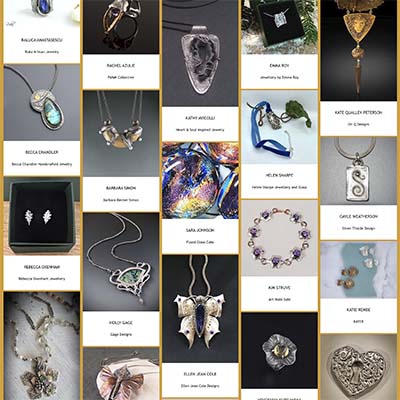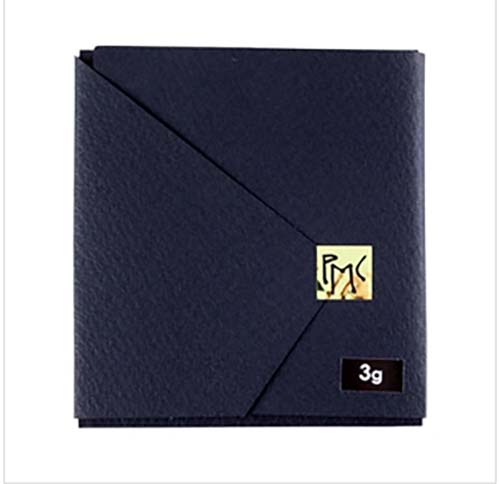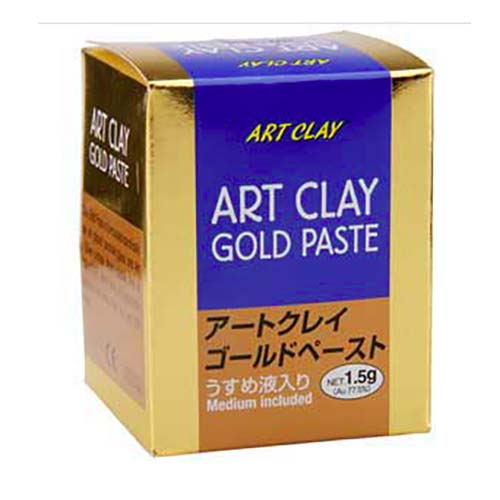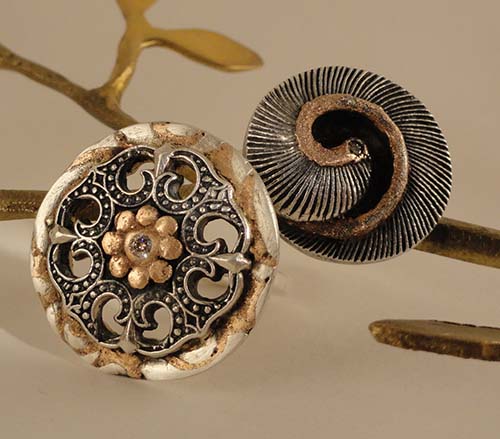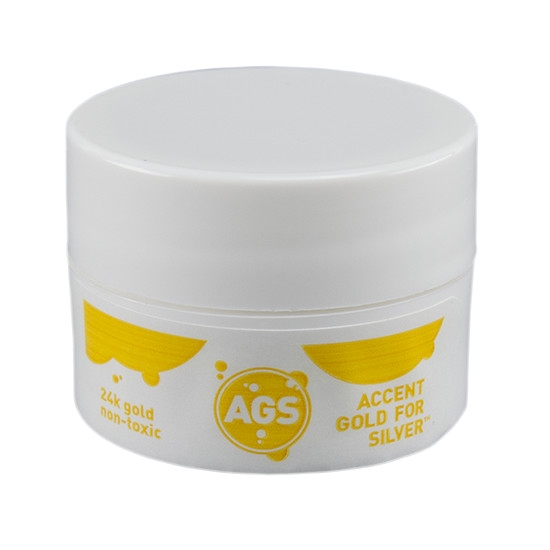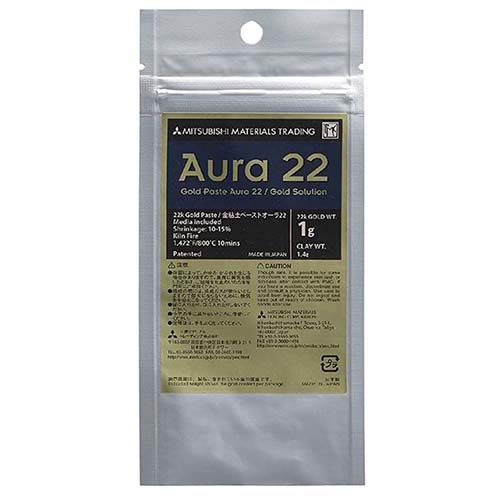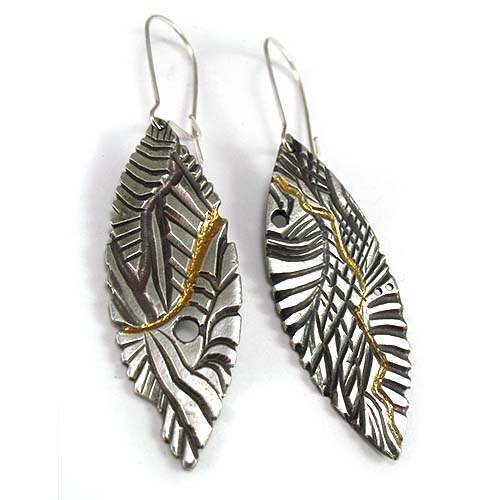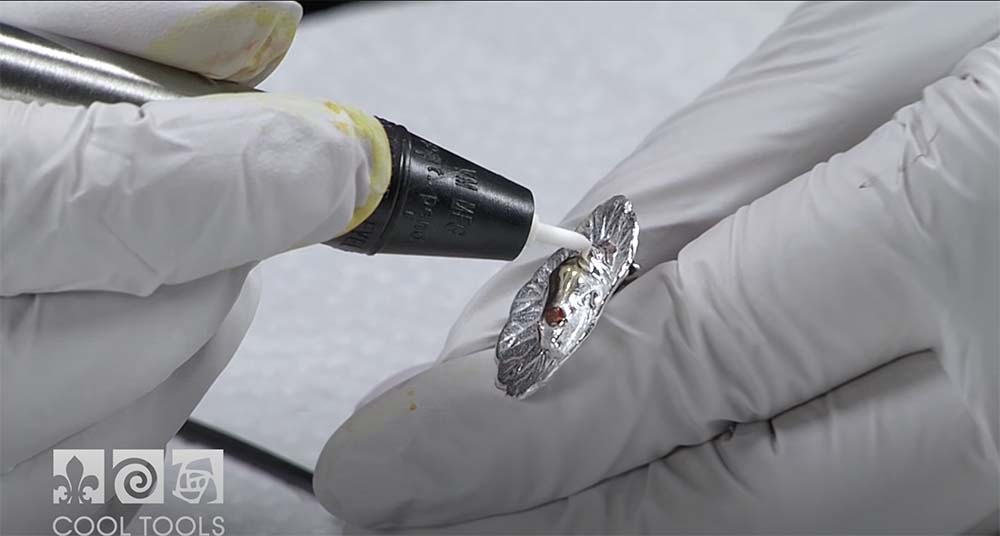Pen Plating
Pen plating is an electro chemical process that deposits very thin layers of gold, rose gold, green gold, silver, rhodium, black rhodium, nickel and other metals onto the workpiece. Kits that are safe to use in a studio workshop range in price and function from under $100 for a disposable pen that is good for an overall plating time of one hour to over $1,000.00 dollars for an advanced system that allows a number of pieces to be bath plated at once.
Safety First!!
Depending on what kit you buy and how it functions, the chemicals used can be very dangerous if not handled with respect.
- Work in a well-ventilated area
- Always wear sufficient eye protection
- Wear an apron to protect your clothing from possible splatters
- Wear gloves to protect your fingers, and to avoid getting body oils on the workpiece
How does it work?
As metal clay enthusiasts, we’re familiar with the microscopic grains of metal that make up metal clay, but plating solutions are completely liquid – so how does the gold get in there? Honestly, the scientific process is too much to go into – basically, the plating metal (gold, rhodium, silver, etc.) is magically suspended in a chemical solution, and then electricity is used to deposit the metal onto the workpiece. There are a number of plating systems that come with either battery or plug-type power sources.
While a plating ‘bath’ provides full coverage as the user dips the work into a full jar of solution, ‘pen’ plating uses a felt tip in a pen-like holder to spot plate selected areas. The felt tip is dipped in the plating solution and rubbed over the workpiece. The longer the tip is in contact with the workpiece, the more metal will be deposited.
Tips
- Finish and polish work before pen plating.
- Avoid cross-contamination by keeping the original jar of solution separate from the container you’re working out of. Pour a tiny amount of plating solution into another jar and use that as you dip the felt tip in and out of the solution. When you are finished with the job, wipe the jar with a paper towel, put it into a plastic bag, and take the bag to a hazardous waste facility.
- Be sure to dedicate one felt tip per metal content used. i.e.: one tip for yellow gold, one tip for rose gold, one tip for green gold, etc.
- Work needs to be spotlessly clean before plating. Wipe the piece with alcohol to remove all dirt and oil from the surface.
- Over polishing may remove some of the very thin plated surface, so do all finishing and polishing before you start. A silver scratch will just turn into a gold scratch if you don’t prep correctly.
- Because the plating solution won’t transfer to a dirty surface – apply patina, clean with alcohol, and then plate to achieve an antiqued look.
- Because rings are continually being rubbed and burnished by fingers, plating is not a good candidate for ring shanks.


